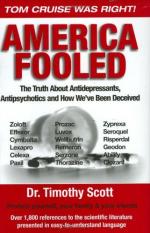|
This section contains 155 words (approx. 1 page at 300 words per page) |
Any of a group of drugs, also termed neuroleptics, used medicinally in the therapy of schizophrenia, organic psychoses, the manic phase of manic-depressive illness, and other acute psychotic illnesses. The prototype antipsychotics are the phenothiazines, such as chlorpromazine (Thorazine), and the butyrophenones such as haloperidol (Haldol). The antipsychotics are tri-cyclic compounds, with chemical substitution at R1 and R2, which determine the selectivity and potency of the neuroleptic.
 Figure 1 Antipsychotics
Figure 1 Antipsychotics
The "positive" symptoms of psychotic disorders, such as hallucinations, can often be effectively treated with antipsychotics; the "negative" symptoms, such as withdrawal, are less effectively managed by these drugs. Most of these drugs also have effects on movement, and a good response to the drugs' antipsychotic effects must often be balanced against motorside effects.
Bibliography
BALDESSARINI, R. J. (1990). Drugs and the treatment of psychiatric disorders. In A. G. Gilman et al. (Eds.), Goodman and Gilman's the pharmacological basis of therapeutics, 8th ed. New York: Peragamon.
|
This section contains 155 words (approx. 1 page at 300 words per page) |


